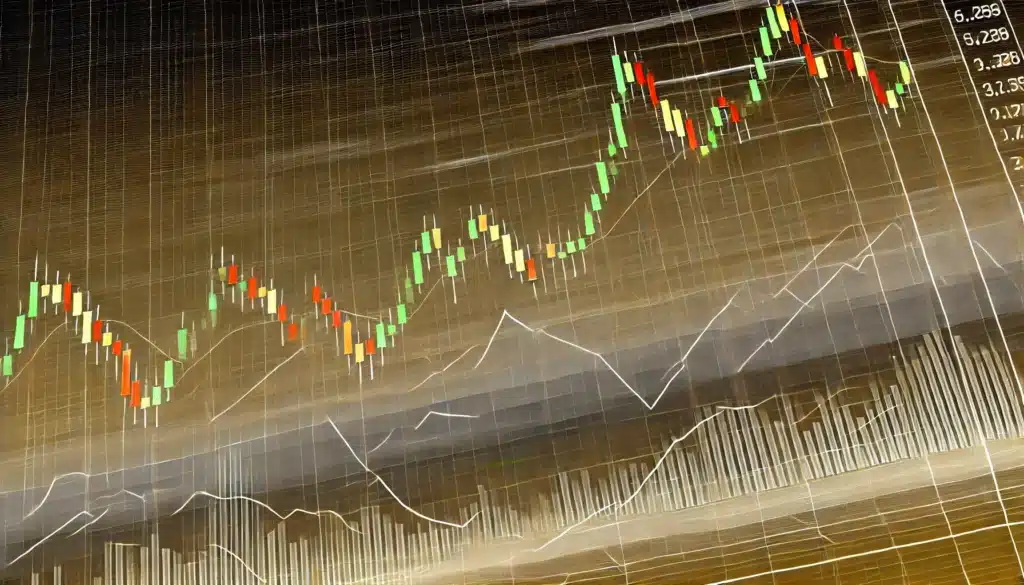What Is Intrinsic Value in Options?
What Is Intrinsic Value in Options?
Introduction to Intrinsic Value in Options

In options trading, understanding the concept of intrinsic value is essential for making informed decisions. Intrinsic value refers to the real, measurable worth of an option based on the underlying asset’s current price. It represents the portion of the option’s price that is “in the money” and provides traders with a key metric for determining whether an option is worth exercising or holding.
This guide will dive deep into the definition of intrinsic value, how it is calculated, and why it is crucial for successful options trading. By the end, you’ll have a comprehensive understanding of how to use intrinsic value in your options strategy.
Defining Intrinsic Value in Options
What Is Intrinsic Value?
Intrinsic value in options is the difference between the current price of the underlying asset and the strike price of the option, only if this value is favorable for the option holder. In other words, it’s the portion of the option that reflects the profit a trader would make if they exercised the option immediately.
- For call options, intrinsic value is calculated as the difference between the underlying asset’s current market price and the strike price of the option.
- For put options, intrinsic value is the difference between the strike price and the current market price of the underlying asset.
If the difference is positive, the option has intrinsic value and is considered “in the money.” If the difference is zero or negative, the option has no intrinsic value and is either “at the money” or “out of the money.”
Intrinsic Value Formula
The intrinsic value for options can be calculated using the following formulas:
- Call Options:
Intrinsic Value = Current Price of Underlying Asset – Strike Price
(If the result is positive) - Put Options:
Intrinsic Value = Strike Price – Current Price of Underlying Asset
(If the result is positive)
Examples of Intrinsic Value in Call and Put Options
Example of a Call Option’s Intrinsic Value
Suppose you own a call option on Apple (AAPL) with a strike price of $150, and the current market price of AAPL is $160. The intrinsic value of your call option would be:
Intrinsic Value = $160 (current price) – $150 (strike price) = $10
In this case, the call option has $10 of intrinsic value because it is “in the money.”
Example of a Put Option’s Intrinsic Value
Now, consider you own a put option on Tesla (TSLA) with a strike price of $250, and the current market price of TSLA is $240. The intrinsic value of your put option would be:
Intrinsic Value = $250 (strike price) – $240 (current price) = $10
This put option has $10 of intrinsic value, as it is “in the money.”
If the current price of the underlying asset equals the strike price, the intrinsic value is zero, and the option is considered “at the money.” If the underlying asset price moves in the opposite direction, the option would have no intrinsic value and be considered “out of the money.”
Why Intrinsic Value Matters in Options Trading
Assessing Profit Potential
Intrinsic value is crucial for evaluating whether an option is worth exercising. It shows how much immediate profit the option would generate if exercised at the current moment. Traders focus on intrinsic value when analyzing “in the money” options because it reflects the real value of the option based on current market conditions.
For example, if you hold a call option with a significant amount of intrinsic value, it may be worth exercising to capture that profit, particularly if the option’s time value (extrinsic value) is low or the option is nearing expiration.
Impact on Option Pricing
Intrinsic value plays a significant role in determining the overall price (or premium) of an option. An option’s total price consists of two components:
- Intrinsic Value: The real, measurable value of the option.
- Extrinsic Value (Time Value): The additional value based on factors such as time until expiration, implied volatility, and market sentiment.
Options with higher intrinsic value tend to have higher premiums, as the real value component increases their price. However, options can also have a high premium due to their extrinsic value, even if they have little or no intrinsic value.
Distinguishing Between In the Money and Out of the Money Options
Understanding intrinsic value is essential when distinguishing between “in the money” (ITM) and “out of the money” (OTM) options.
- In the Money (ITM): Options that have intrinsic value. For call options, this occurs when the underlying asset’s price is above the strike price. For put options, it occurs when the underlying asset’s price is below the strike price.
- Out of the Money (OTM): Options that have no intrinsic value. For call options, this occurs when the underlying asset’s price is below the strike price. For put options, it occurs when the underlying asset’s price is above the strike price.
In the money options are generally more expensive due to their intrinsic value, while out of the money options are cheaper but have higher risk since they rely on future price movements to gain intrinsic value.
Intrinsic Value vs. Extrinsic Value
What Is Extrinsic Value?
Extrinsic value, also known as time value, refers to the portion of an option’s price that exceeds its intrinsic value. It represents the potential for the option to gain intrinsic value before expiration, based on factors like time remaining until expiration and the volatility of the underlying asset.
An option can have a high extrinsic value even if it has no intrinsic value. For example, an out of the money option could still have a premium due to its extrinsic value, which accounts for the possibility that the underlying asset’s price will move in the desired direction before the option expires.
Key Differences Between Intrinsic and Extrinsic Value
- Intrinsic Value: Reflects the real, immediate value of an option based on the current market price of the underlying asset.
- Extrinsic Value: Represents the potential future value of an option, based on time, volatility, and other factors.
When trading options, it’s essential to consider both intrinsic and extrinsic value to make informed decisions about buying, selling, or exercising your options.
Factors That Influence Intrinsic Value
Price of the Underlying Asset
The primary factor that determines an option’s intrinsic value is the price of the underlying asset. As the price of the underlying asset moves in your favor (for a call option, moving higher; for a put option, moving lower), the intrinsic value of the option increases.
Time Until Expiration
Although time itself doesn’t directly affect intrinsic value, it does play a significant role in an option’s total value, as options lose extrinsic value as they approach expiration. Traders closely monitor time decay (the loss of extrinsic value) and intrinsic value as expiration nears to determine the best time to exercise or sell an option.
Conclusion on Intrinsic Value in Options
Intrinsic value is a key concept in options trading, representing the real value of an option based on the current price of the underlying asset. For traders, understanding intrinsic value helps assess whether an option is “in the money” and worth exercising, as well as how much of an option’s price is attributable to its actual worth.
By understanding how intrinsic value is calculated, and how it interacts with extrinsic value, traders can make more informed decisions about entering, exiting, or holding options positions. Whether you’re a beginner or an experienced options trader, mastering the concept of intrinsic value is essential for building a successful options trading strategy.
FAQ Section
What is the intrinsic value of a call option?
The intrinsic value of a call option is the difference between the current price of the underlying asset and the option’s strike price, only if the current price is higher than the strike price.
What happens if an option has no intrinsic value?
If an option has no intrinsic value, it is considered “out of the money.” This means the option’s price is based solely on its extrinsic value, such as time remaining until expiration and market volatility.
How does intrinsic value affect the premium of an option?
Intrinsic value directly affects the premium of an option. Options with a higher intrinsic value will generally have a higher premium, as they represent a greater potential for profit if exercised.
Check out our articles on:
- Introduction to Options Trading
- Mastering Butterfly Spreads
- The Power of Diagonal Spreads
- The Power of Iron Condors
- The Power of Vertical Credit Spreads
Elevate Your Options Trading Skills
Ready to master trading options? Join our community for in-depth education on options trading, live trading sessions, and expert analysis of options trading strategies. Sign up today to start profiting from market swings using advanced options trading strategies!
Below are the links:
To your success,

Billy Ribeiro is a renowned name in the world of financial trading, particularly for his exceptional skills in options day trading and swing trading. His unique ability to interpret price action has catapulted him to global fame, earning him the recognition of being one of the finest price action readers worldwide. His deep comprehension of the nuances of the market, coupled with his unparalleled trading acumen, are widely regarded as second to none.
Connect with us:






